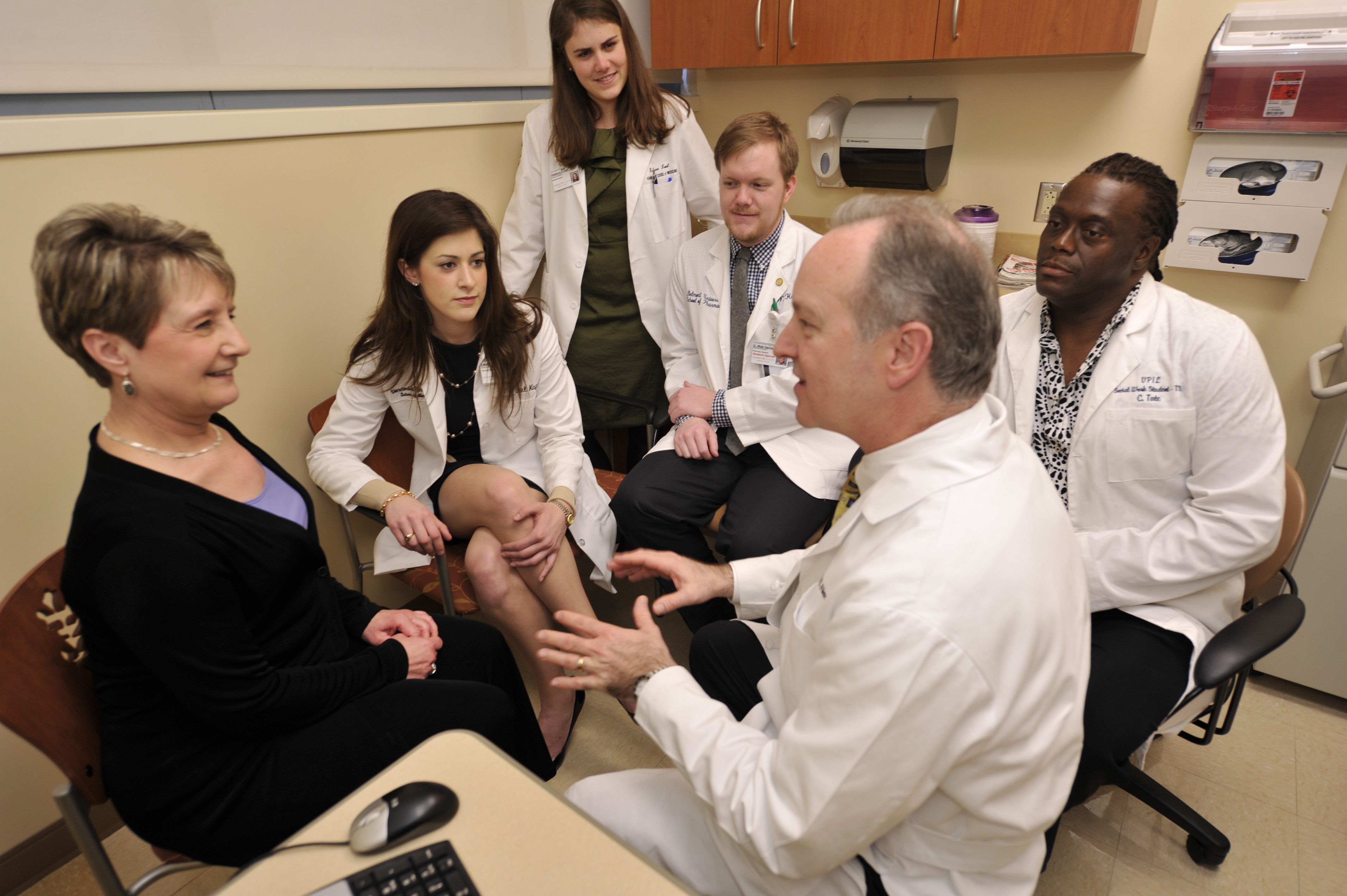
Three years ago, with support from the Macy Foundation, Prof. Glyn Elwyn, a family doctor and researcher, and his colleagues at Dartmouth College set out to teach medicine, nursing and physician assistant students how to better engage patients in health care decision-making. This included students from Geisel School of Medicine (Medical Doctorate Program), Colby Sawyer College (Nursing Program) and Franklin Pierce University (Physician Assistant Program).
“As providers, we’ve traditionally assumed what we think our patients need, but patients have different priorities and we need to better understand what their own individual goals are,” said Elwyn. “In shared decision-making, the patient and provider work together and discuss what treatment options are going to best fit into that patient’s life. Whether the patient is looking for better quality of life, lower costs or less side effects, these issues are talked about in shared decision-making and treatment plans are made together.’’
Going Beyond Communications: The Importance of Shared Decision-Making
“Patient-centered care has been around for decades, but when you get down to it, it’s really about better understanding what matters most to your patient,” Elwyn says.
Shared decision-making gets to the crux of what health care is all about, according to Elwyn. “When patients are part of the decision process they are more satisfied, are more likely to adhere to treatment protocols, and their health improves.”
Ultimately, the program aims to help students become better providers by taking the patient perspective into account.
Leveraging Technology
Like many other institutions across the country, Dartmouth was struggling to bring students together because of scheduling and time constraints in existing curricula. In-person workshops, which was the traditional format for teaching communication skills, were expensive and often too logistically difficult to get students and faculty together, especially outside of their normal class schedules.
So, Elwyn and his team piloted a new interactive curriculum using video conferencing and other educational technologies to deliver the curriculum—while still deploying tested teaching approaches such as simulation, role play and feedback.
How it Works
To make sure students understand the power of shared-decision making, they first take an online introductory course that lays the foundation for the curriculum.
Each student then acts out a patient encounter with a standardized patient, via an online video conference platform.
The virtual encounter, which lasts no more than 20 minutes, lets students experience what it would be like to talk through different treatment options with a patient and make decisions together.
“We were striving to create an authentic shared decision-making process for the students,’’ Elwyn described. “These are sometimes difficult conversations to have with patients, so if we are able to provide students with these experiences early on it will help them become more comfortable in their role and better communicators.”
As students discuss health care decisions with the “patient,’’ they are scored using an established measure of shared decision-making, called the Observer OPTION score. The scoring system corresponds to the “Three Talk Model of Shared Decision-Making.”
Once the student has gone through the first simulation they then have a chance to reflect and debrief with the “patient coach” to see what they could improve upon. After that, at a future date, the exercise is repeated.
Students who have gone through the simulations say that the mock experiences have helped them become better communicators. In fact, one nursing student told Elwyn that, “In nursing, shared decision-making gets lost in the process of everything else we are doing. This experience was amazing and I am going to encourage my nursing colleagues to try it out!”
Because the virtual encounters are recorded, Dartmouth has examples of what good patient-provider encounters look like and has created short exemplar videos of key skills. They hope to create a process by which these assets can be used across a range of health professional schools and shared with other institutions who are working on similar efforts. Plans are in place to offer assessments of shared decision-making and confirm competence levels.
Building a Path Forward
Looking ahead, Elwyn and his colleagues hope to embed the innovation into Dartmouth’s curriculum and work with other institutions around the country. However, one of the biggest barriers the project has faced with video conferencing is issues of internet bandwidth, and the cost of creating stable platforms that allow bespoke video conferencing for educational assessment and feedback. As technology continues to advance, they are hopeful this challenge will fix itself.
Another barrier the team recognized is the lack of faculty who have experience in teaching shared decision-making. As more institutions pilot their own programs, Dartmouth is eager to learn from similar efforts and build a national cohort of faculty who can help drive these programs.
“Because of the technology we have today, teaching communications skills can be done anywhere and is potentially scalable,’’ Elwyn said. “Health professions schools across the country are using new technologies to teach shared decision-making, so I am hopeful that as we continue to build up our own programs we can connect resources and make this type of virtual training accessible to all of our students.”